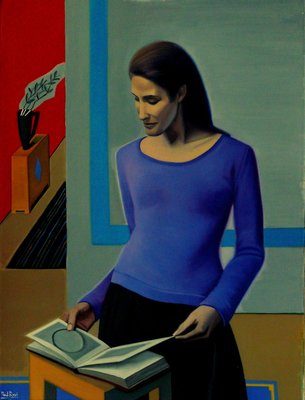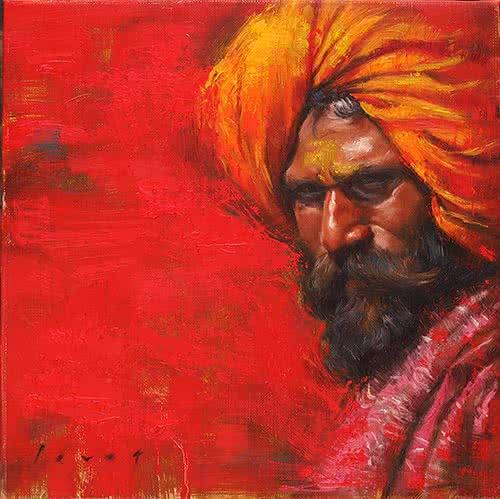The Evolution of Art: A Comprehensive Guide to Figurative Oil Painting
The Evolution of Art: A Comprehensive Guide to Figurative Oil Painting
Blog Article
The Advancement of Metaphorical Oil Painting: Understanding Its Historical Significance and Modern Interpretations
The evolution of metaphorical oil paint serves as an engaging lens with which to examine the interaction between creative expression and historic context. Contemporary musicians, drawing from this rich heritage, are now reinterpreting the human number in ways that test traditional stories.
Beginnings of Figurative Oil Paint
The beginnings of figurative oil paint can be traced back to the very early Renaissance in Europe, especially in the 15th century. This duration noted a considerable separation from the level representations and inflexible forms characteristic of middle ages art. Artists began to discover naturalism, emphasizing the human figure and its psychological expression. The development of oil paint enabled higher deepness of color and detail, boosting the realistic look and vibrancy of their work.

In this transformative period, numbers were usually shown within contextually abundant settings, showcasing not just their physical qualities however likewise their psychological states. Pioneers such as Jan van Eyck and Titian harnessed the tool's versatility, using layering strategies to attain brightness and structure. This development helped with the portrayal of detailed textiles and the subtleties of skin tones, adding to the development of portrait and narrative scenes.
Moreover, the Renaissance emphasis on humanism cultivated an admiration for uniqueness, which consequently influenced musicians to develop more vibrant and relatable figures - figurative oil painting. Therefore, figurative oil painting arised as an effective vehicle for narration and emotional engagement, laying the foundation for future creative movements and designs
Secret Historical Activities
Substantial historical activities have formed the advancement of metaphorical oil painting, each adding special approaches and techniques that expanded the tool's possibilities. The Renaissance noted a zero hour, emphasizing realistic look and the human type, with musicians like Leonardo da Vinci and Michelangelo pushing the borders of anatomical precision and perspective. Following this, the Baroque era brought remarkable contrasts of light and darkness, exemplified by Caravaggio, that instilled religious motifs with intense emotionality.
The 19th century presented Romanticism and Realism, where musicians such as Delacroix and Courbet challenged timeless suitables, focusing on specific expression and everyday life. The development of Impressionism further reinvented the tool by emphasizing the impacts of light and shade, leading to a departure from typical representation.
In the early 20th century, activities like Expressionism and Cubism redefined figurative painting via abstraction and the exploration of psychological depth. Each of these activities not just showed the societal adjustments of their times but also prepared for contemporary analyses. The interplay in between these historical motions has developed a rich tapestry of approaches and designs, affecting modern-day musicians in their pursuit of catching the human experience on canvas.
Strategies and Materials Development

Throughout the Baroque period, strategies such as chiaroscuro and sfumato arised, improving the emotional vibration of figurative make-ups. Musicians began to trying out lusters and impasto, manipulating appearance and brightness. that site By the 19th century, technologies like making use of pre-mixed paints in tubes revolutionized access, enabling artists to repaint en plein air and catch the fleeting results of light.
The 20th century saw the introduction of artificial pigments and mediums, which increased the combination and altered the uniformity of oil paints. The exploration of new application strategies, such as palette blades and brushes of varying rigidity, further varied artistic expression. Jointly, these improvements show the developing partnership between products, techniques, and the creative vision integral in figurative oil painting.

Contemporary Interpretations
Contemporary analyses of metaphorical oil painting show a vibrant discussion between tradition and advancement, where musicians test established standards and check out varied styles. This advancement shows up in numerous means, as contemporary artists blend classical methods with modern-day ideas, commonly resolving social, political, and individual stories.
Lots of professionals draw motivation from historical works, yet they infuse their items with modern point of views, utilizing the human form as a lorry for discourse on gender, identification, and society. Artists significantly explore abstraction, distortion, and multimedias, which allows for a more comprehensive analysis of the figure and its context.
Moreover, the usage of brilliant color schemes and unique compositions often offers to interrupt traditional watching experiences, provoking crucial involvement from target markets. This shift in emphasis extends past appearances; it shows an expanding understanding of the intricacies of human experience in an interconnected world.
As metaphorical oil painting remains to progress, it continues to be an important medium for discovering the subtleties of contemporary life, symbolizing both a regard for heritage and a commitment to dynamic idea. The outcome is an abundant tapestry of expression that reverberates with the complexities of the contemporary human problem.
Influence On Modern Art
The effect of metaphorical oil painting on contemporary art is extensive, as it has actually continually influenced a myriad of imaginative movements and practices throughout the 20th and 21st centuries. From Expressionism to Surrealism and past, the expedition of the human number has stayed a main motif, permitting artists to convey complicated feelings and stories. This focus on figurative representation has caused a re-examination of typical strategies, resulting in ingenious techniques that mix realistic look with abstraction.
In addition, contemporary artists have embraced figurative oil painting as a means to deal with political and social problems, making use of the tool to YOURURL.com test assumptions of culture, identity, and sex. The renewal of rate of interest in metaphorical operate in recent years reflects a yearning for connection in an increasingly digital globe, where human experience and feeling are extremely important.
In addition, the discussion between figurative oil painting and modern art appears in the jobs of artists such as Kehinde Wiley and Jenny Saville, who attract on historic recommendations while infusing redirected here their items with modern significance. Ultimately, metaphorical oil paint continues to shape and redefine modern-day creative expression, highlighting its enduring value in the art globe.
Conclusion
The development of figurative oil painting emphasizes its historical value and versatility throughout different imaginative movements. Inevitably, figurative oil paint remains a crucial tool for checking out the human experience, reverberating profoundly in today's electronic landscape.
The advancement of figurative oil painting offers as a compelling lens with which to take a look at the interplay between creative expression and historic context.Substantial historical motions have actually formed the evolution of figurative oil paint, each adding one-of-a-kind viewpoints and methods that increased the tool's opportunities.As historical movements shaped the trajectory of figurative oil paint, the strategies and products employed by artists have likewise undertaken substantial transformations. figurative oil painting.The impact of figurative oil painting on contemporary art is extensive, as it has actually consistently inspired a myriad of artistic movements and methods throughout the 20th and 21st centuries.The development of metaphorical oil paint highlights its historic value and flexibility throughout various artistic movements
Report this page